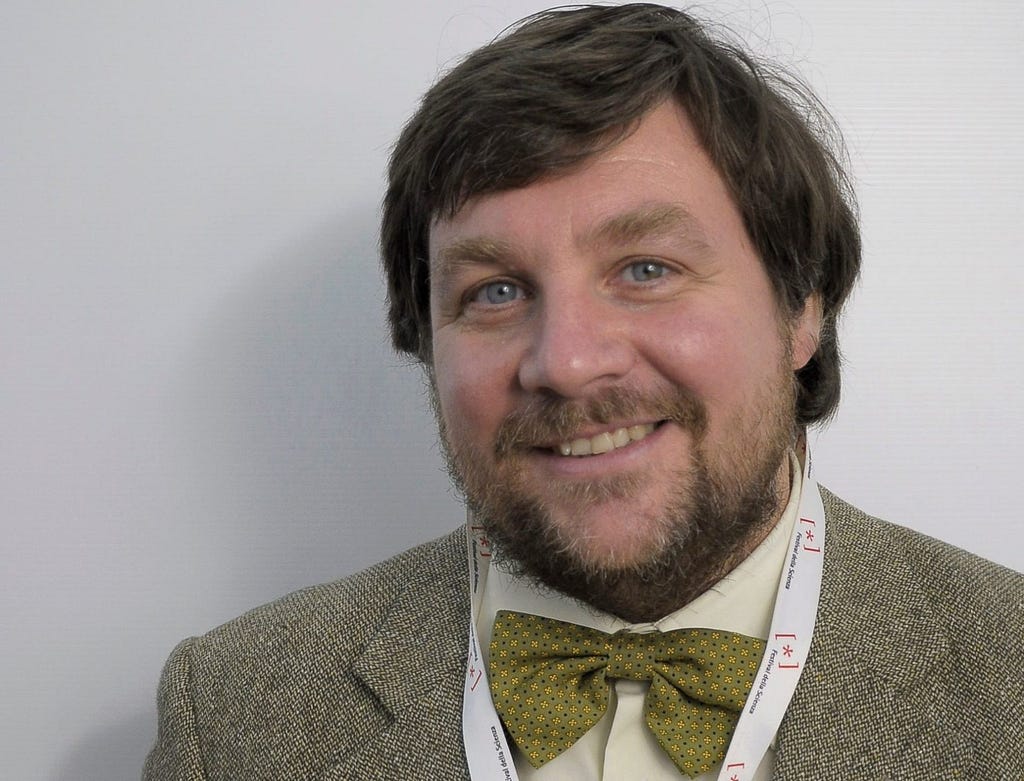Italian Climatologist Sees Immediate Need to Change Our Everyday Mindset on Lifestyle and the Economy

Satellite images show that a group of glaciers extending an eighth of East Antarctica — long considered to be more stable than its western neighbor — are losing ice, signaling widespread changes in the ocean and raising alarm among NASA scientists.
The Antartica research, conducted by NASA glaciologist Catherine Walker, was carried out using detailed maps showing ice velocity and surface height elevation as part of a project to trace the global movement of ice since 2008.

It has been discovered that the Totten Glacier, which is the biggest glacier in East Antarctica and contains enough ice to raise the sea level by at least 11 feet (3.3 meters), is losing ice due to “warming of ocean waters” and several smaller glaciers nearby are responding in a similar manner.
Walker found that four glaciers in Vincennes Bay, west of Totten, have lost about 9 feet of height while a series of glaciers along the Wilkes Land coast has doubled the rate of sinking since 2009, with the surface falling about a quarter of a meter per year.
“These two groups of glaciers drain the two largest sub-glacial basins of eastern Antarctica, and both basins are grounded below sea level,” Walker wrote in her research. “If warm water can get far enough back, it can progressively reach deeper and deeper ice. This would likely speed up glacier melt and acceleration, but we don’t know yet how fast that would happen. Still, that’s why people are looking at these glaciers, because if you start to see them picking up speed, that suggests that things are destabilizing.”
Is your business looking for ideas on making a positive environmental impact? Check this free online report from B Lab that compiles articles and resources to help your business become a climate leader. Whether you work at a large company or an agency, get inspired to do more today.
What Can Be Done?
What do these changes mean for our planet and its people? Impakter spoke with Luca Mercalli, a climatologist and president of the Italian Meteorological Society, to get his thoughts on the environmental changes and possible solutions.

Let’s go straight to the heart of the problem: How much time is there to stop the climate drift?
Time is up—the increase in temperatures cannot be stopped. But we can try to stem it, avoiding the total catastrophe that would put the planet underwater. To do this will require an immediate change in everyone’s personal lifestyle and in the economy’s production model.
If we talk about stopping altogether, we have no more time. We lost it in previous decades. They were already known problems in 1992, when the United Nations held the first world climate convention in Rio de Janeiro. We are already steeped in the disease; we can only reduce the symptoms.
Let me give you the example of a fever: We have a fever at 38 degrees C. Even if we treat it immediately, the fever continues to rise to at least 39 degrees; however, that is certainly better than going all the way up to 42 degrees. The numbers are the same for the climate. We have already grown by a degree. If we do all what the Paris agreement expects, there will be another increase. But if we do nothing, by the end of the century you can expect an increase of 5 degrees.
Weather phenomena are increasingly extreme. What is the link with climate change?
The weather phenomena are extreme on two scores. But what matters is that they are short-lived and affect small areas of the planet. When we talk about global warming, we are interested in what happens to the entire planet, not to the individual city, and it concerns the long-term trend over the years, not what happens in three days. In Italy, 2018 was the hottest in history: The Italian climate graph has been rising for years. Then, in between, anomalous episodes occur. Maybe in a month we’ll complain about the cold instead of the heat.
We live surrounded by water. What will happen to Italy and other waterfront countries in the near future?
The oceans in the world are growing at 3.5 millimeters per year. The problem is already here with us: The sea has already increased by 20 centimeters in the last century. And the more the glaciers melt, the higher the water levels. You cannot solve the problem once the sea has increased by a meter; it cannot be emptied. We must think of containing it starting now.
What can we do every day to fight global warming?
First of all: Don’t leave rubbish in the environment; produce less waste by being more careful; focus on recycling. Then there is energy: We waste a lot of it. Houses are energy sieves, although there are ways to cut back on consumption by as much as 80% that can also save a lot on bills. There are government subsidies to make our buildings more energy efficient.
Transport is another sector. Have a car that consumes little instead of an SUV; use public transport or, if possible, bikes; reduce air travel, even though with low-cost flights everyone is tempted by exotic vacations. Finally, the last area is that of food: Eat little meat, which causes a lot of emissions to produce; buy local products that have not been transported all over the planet, and eat seasonal products. For example, strawberries at Christmas have been grown in a greenhouse or have arrived on a plane trip.
And how is it possible to quickly change a production system still tied to 20th century logics?
Even the United Nations has written that our economic system is in conflict with the environment. We must have the courage to question it. We must understand that a system based on infinite growth, in a world of finite dimensions, cannot function. We need an international institution on economic transition, formed by the best economists in the world, for the development of a new model. Investment in knowledge is essential to identify a different system, which should be born of a negotiated initiative.
This article is part of an editorial collaboration with Impakter Italia, with sections published earlier as an editorial piece and an interview originally published in Italian.
B the Change gathers and shares the voices from within the movement of people using business as a force for good and the community of Certified B Corporations. The opinions expressed do not necessarily reflect those of the nonprofit B Lab.

Sounding the Alarm: Glacier Research Shows Effects of a Warming Climate was originally published in B the Change on Medium, where people are continuing the conversation by highlighting and responding to this story.